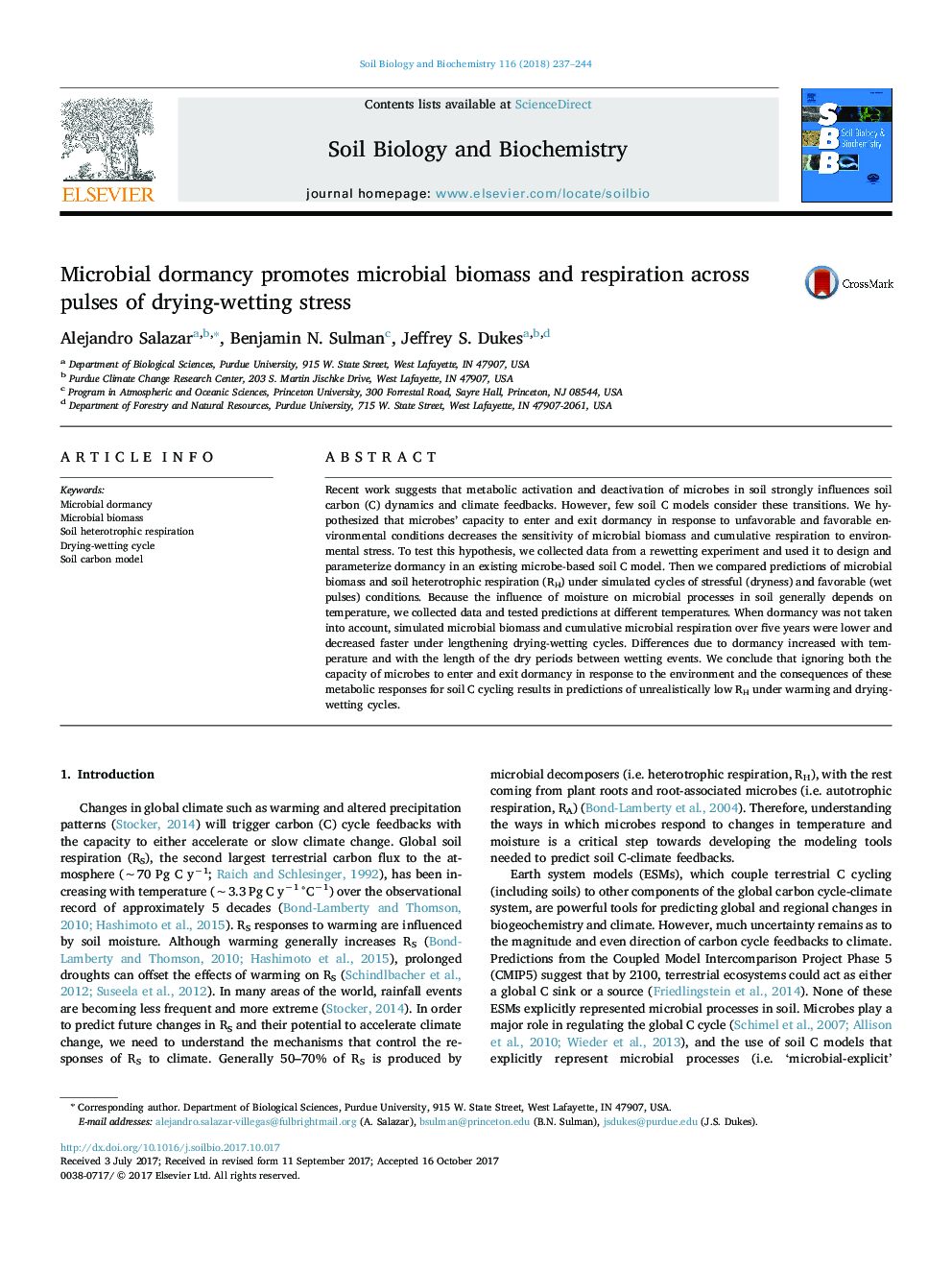| Article ID | Journal | Published Year | Pages | File Type |
|---|---|---|---|---|
| 8363142 | Soil Biology and Biochemistry | 2018 | 8 Pages |
Abstract
Recent work suggests that metabolic activation and deactivation of microbes in soil strongly influences soil carbon (C) dynamics and climate feedbacks. However, few soil C models consider these transitions. We hypothesized that microbes' capacity to enter and exit dormancy in response to unfavorable and favorable environmental conditions decreases the sensitivity of microbial biomass and cumulative respiration to environmental stress. To test this hypothesis, we collected data from a rewetting experiment and used it to design and parameterize dormancy in an existing microbe-based soil C model. Then we compared predictions of microbial biomass and soil heterotrophic respiration (RH) under simulated cycles of stressful (dryness) and favorable (wet pulses) conditions. Because the influence of moisture on microbial processes in soil generally depends on temperature, we collected data and tested predictions at different temperatures. When dormancy was not taken into account, simulated microbial biomass and cumulative microbial respiration over five years were lower and decreased faster under lengthening drying-wetting cycles. Differences due to dormancy increased with temperature and with the length of the dry periods between wetting events. We conclude that ignoring both the capacity of microbes to enter and exit dormancy in response to the environment and the consequences of these metabolic responses for soil C cycling results in predictions of unrealistically low RH under warming and drying-wetting cycles.
Related Topics
Life Sciences
Agricultural and Biological Sciences
Soil Science
Authors
Alejandro Salazar, Benjamin N. Sulman, Jeffrey S. Dukes,
